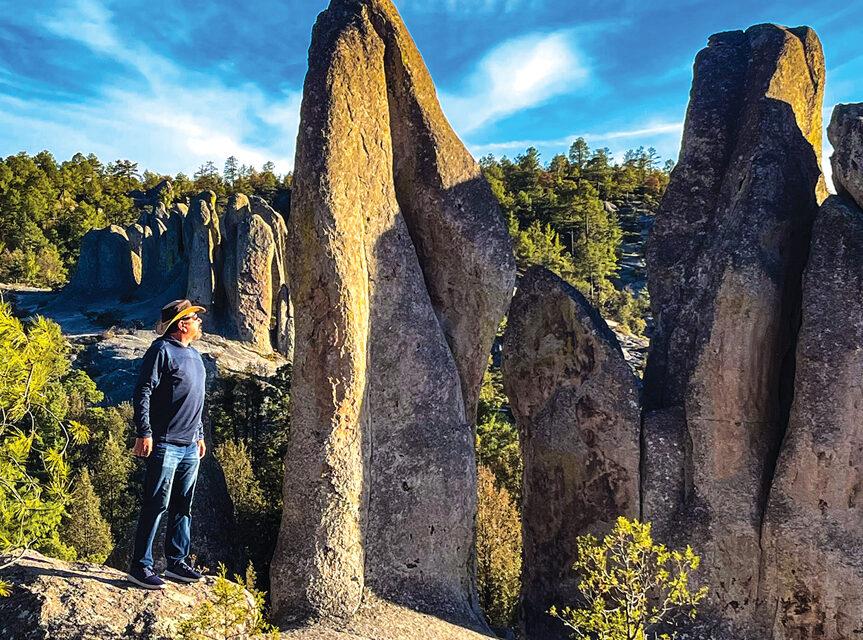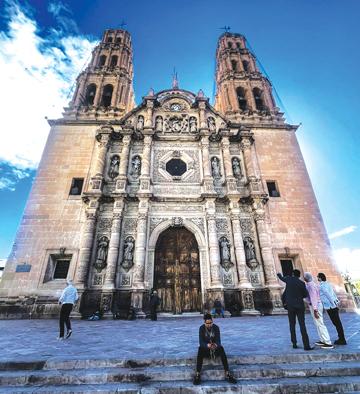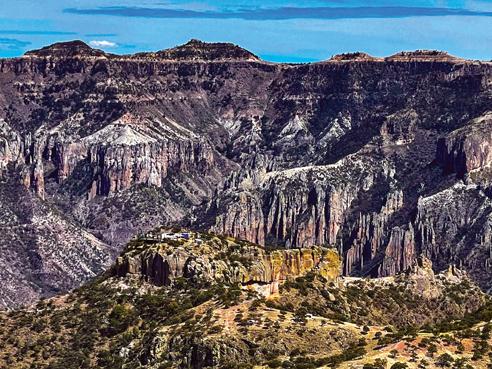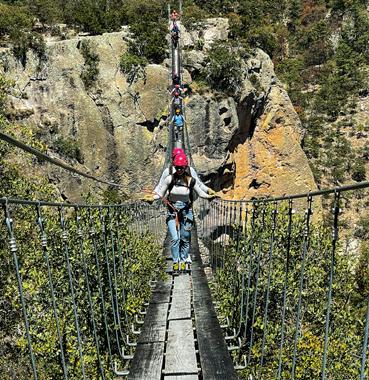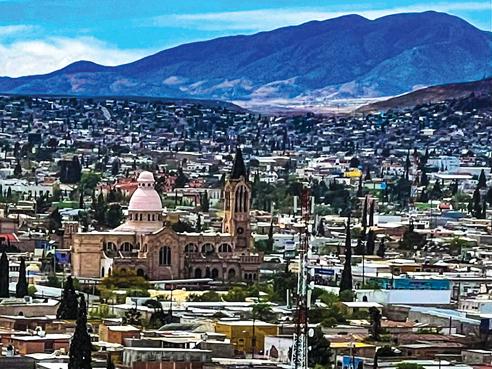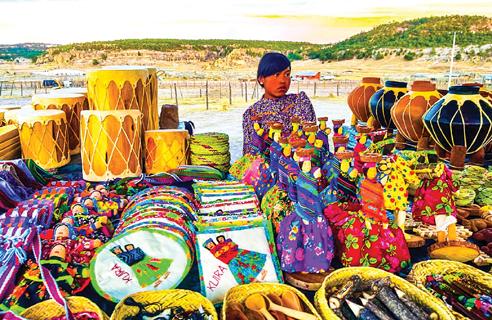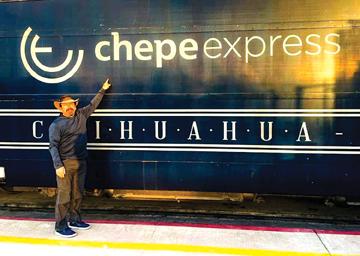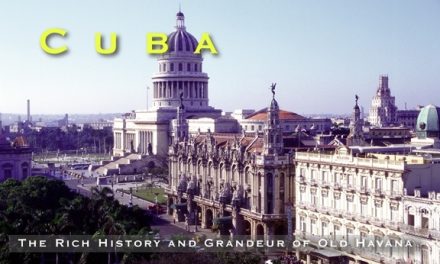Mexico
Ay! Chihuahua! A Visit to a Very Different Mexico
Article and photography by Nicholas Kontis
Mexico is much more than its beaches. Indeed, each of its 32 states is unique. Canadian and American travelers who have “done” Cancun and Puerto Vallarta may want to abandon their tourist radar to visit Mexico’s largest state, historic Chihuahua, which itself is roughly as large as the entire United Kingdom.
Blanketed by the desolate Chihuahuan Desert, dissected by the magnificent Copper Canyon, Chihuahua is the heart and soul of Mexico, with a culture all its own.
The canyon is a marvel in itself. The total length of its six separate chasms is four times that of Arizona’s Grand Canyon. They are best seen on one of the world’s most amazing train journeys, the El Chepe Express aboard Chihuahua Pacific Railways. Traveling from Los Mochis, in the Pacific coastal state of Sinaloa, the iron horse ascends 2,300 meters (about 7,500 feet) to the town of Creel before descending slightly to the state capital of Chihuahua city.
Pancho Villa’s footsteps
I’ve traveled that unforgettable route before. So on my last visit, I flew into the gateway city of about 1 million people. As my flight arrived, I wondered if Clint Eastwood might have filmed a “Spaghetti Western” or two in the desert here, instead of Italy and Spain.
In the indigenous Nahuatl language, chihuahua means “between two waters,” as it lies at the convergence of the Chuviscar and Sacramento rivers. I explored its colonial center, museums and churches, and joined locals eating, drinking, and dancing as we waited for a desert sunset at the Plaza de Armas.
Surrounded by mountains, the multifaceted metropolis is deep in Mexican history. The old city was founded in 1709 by Don Antonio Deza y Ulloa. It is surrounded by beautiful colonial architecture, including the Spanish Baroque-style Cathedral of Chihuahua; construction began in 1725 but wasn’t completed until 1792. The captivating 19th-century Government Palace is also located in the city’s heart. The Casa Chihuahua Heritage Center in the former Federal Palace contains a shrine to Miguel Hidalgo, known as the Father of the Mexican State.
Perhaps the most popular tourist site is the Historical Museum of the Mexican Revolution in the former home of the iconic General Francisco (Pancho) Villa. The notorious revolutionary leader took a liking to the property, purchased it in 1911, and maintained it as a residence named “Quinta Luz” after his wife, Doña Luz Corral. Today, a personal museum of Villa’s intense life includes his office, paintings, rifles, and a bullet-ridden 1915 Dodge 30-35.
Outside the city
The “state spirit” of Chihuahua is sotol, a beverage made not from agave, like tequila and mezcal, but from the desert shrub Dasylirion wheeleri, or desert spoon. I learned about the bulbous plant — which bears a striking resemblance to the onion or garlic — during a visit to the Oro de Coyame distillery in Aldama, outside Chihuahua City. Already 12 years old before its harvest, it produces a 35 to 55-grade alcohol, with smokey notes similar to mezcal.
One of Mexico’s lesser-known cultures is that of the Mennonites. The Mennonite Museum in Cuautemoc, two hours’ drive north of Chihuahua city, replicates a typical home of this Christian denomination, which settled here between the First and Second World Wars. Escaping persecution in Russia, the Mennonites traveled from Europe to the Great Plains of Canada and the United States in the late 1800s, then continued south into Chihuahua around 1920. This century-old site displays many items from Russia, Germany and Holland, including children’s toys, work and dress clothes, sewing machines, buggies and farming tools. Today there are an estimated 110,000 Mennonites in Mexico, with more than half of them in Chihuahua.
The Copper Canyon
The gateway town to the Copper Canyon is Creel. Life runs at a snail’s pace in this most visited station on the Chihuahua-Pacific railway route. Along the main street, numerous shops sell crafts from the native Tarahumara people, including palm baskets, drums, bracelets and earrings, belts, bows, and even violins.
Lodging options are highlighted by the Hotel El Mirador. It’s a spectacular splurge but well worth it. Perched on a cliffside overhanging the canyon, the Mirador features 70 rustic rooms and suites, all with wood-beamed ceilings and fireplaces, and a balcony restaurant that serves delicious three-course menus. I left my curtains open to be awakened by a multi-colored sunrise.
Not surprisingly, adventure tourism is big here. Outfitters lead hiking excursions into the ravines, horseback riding, mountain biking, climbing and rappelling. My time was limited, but I enjoyed visiting the Copper Canyon Adventure Park, which claims its Ziprider is the longest zipline in the world. At 2,554 meters (8,379 feet) long, incorporating two suspension bridges and a vertical drop of 250 meters (820 feet), it is certainly daunting. A series of seven rides crisscross the canyon at speeds of up to 80 miles per hour. Many visitors consider it a sufficient thrill to ride a 60-passenger cable car over a section of the canyon with sweeping views. The park also has a climbing wall, a mini-golf course, a restaurant, and a bar with a glass floor.
Other highlights include the wildly wind-sculpted Valley of the Monks, Frogs and Mushrooms, peculiar natural formations which manifest in unique figures. Arareko Lake is enjoyed for its crystal-clear water reflecting the landscape of a pine-oak forest. The native people offer rental cabins and row boats for hire. The Jesuit Mission of San Ignacio de Arareko dates from the 17th century.
El Chepe Express
I find solace in train travel. It gives an entirely new perspective on your surroundings. The 9½-hour El Chepe Express, from Creel to the Pacific in Los Mochis, carries 350 to 400 passengers a day in one of the world’s most spectacular railway excursions. A marvel in engineering, the journey cuts through tunnels, bridges, waterfalls, mountains, diverse vegetation, canyons and the Raramuri valley. Like plane travel, El Chepe has three classes of service: first-class (including a meal), executive and tourist class. Your itinerary allows three stopovers, the length of each of which you must plan in advance.

